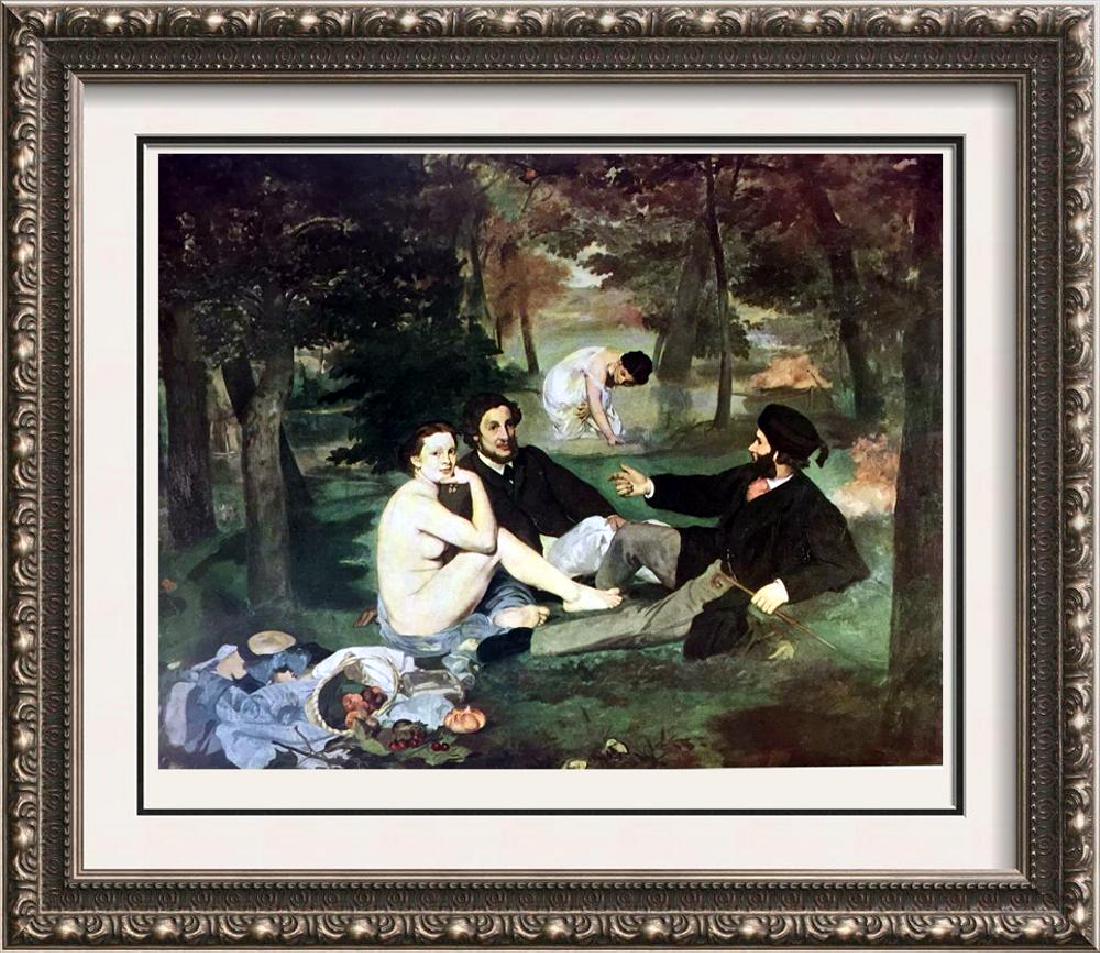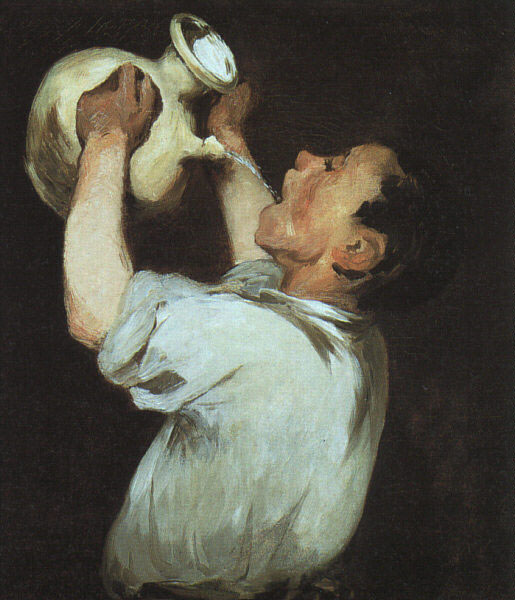

- #Edouard manet luncheon on the grass Patch#
- #Edouard manet luncheon on the grass free#
- #Edouard manet luncheon on the grass crack#
Her body is starkly lit and she stares directly at the viewer.
#Edouard manet luncheon on the grass crack#
"Ah, her eyes are green with flecks of blue the window hasĪ Z-shaped crack in it." To notice the color components of an object, Monet had to stop seeing the object and focus on the color.The painting features a nude woman casually lunching with two fully dressed men. But the first time you encounter a face or place, you examine it thoroughly. Or a man's double chin - so your eyes don't search out details. You get the gist of what you see - a blue car, a red house, Becoming familiar with an object or a face falsifies it. He believed that people should always judge based on first impressions, before getting to know something or someone. Looks to you, the exact color and shape." Merely think, here is a little square of blue, here an oblong of pink, here a streak of yellow, and paint it just as it When you go out to paint, try to forget what objects you have before you - a tree, a house, a field. He looked at the colors of objects instead of the objects themselves. The new style of Claude Monet (1840-1926) came from a shift in focus. Into much tinier patches, flecks, and dabs of color. (Tache means "spot" or "blot" in French.) The Impressionists modified this technique by breaking up Manet's color patches
#Edouard manet luncheon on the grass Patch#
So instead of painting a range of progressively lighter or darker shades of orange to indicate how close an orangeĭress is to a light source, he would simply slap on a patch of bright orange. Manet also painted in patches of color, cutting out in-between values (shades of color) to make sharper contrasts. Without it, they couldn't have painted fast enough to capture the shifting effects of light. The Impressionists adopted Manet's alla prima ("at once") technique. Manet's famous painitngs Olympia, and The Luncheon on the Grass is one of the perfect example of the techniques When he made a mistake, he scraped off the paint, down to the bare canvas, and then repainted That meant he had to choose the perfect color right off the bat because there were no layers to fall back on. How did he achieve this high-speed efficiency? By not painting in layers and He did this by completing his paintings in one sitting. Obviously, the models couldn't pose all that time, so painters frequently added layers without the model present.Īs a Realist, Manet preferred to paint from life - in other words, with his model in front of him. The painting to give the surface a smooth finish. Of course, they had to wait for each layer to dry before adding the next one. What was the bridge between Realism and Impressionism? It was Manet's new approach to painting, his innovations with color and brushwork.Įarlier artists began painting their canvases with a layer of dark, usually brown, paint and then built layers of paint on top of it. He was the unofficial head of the twice-weekly meetings, which included Monet, Renoir, Edgar Degas,Īlfred Sisley, Émile Zola, and sometimes Paul Cézanne, Pissarro, and others. Meeting near Manet's studio at Café Guerbois. He influenced the Impressionists and was, in turn, influenced by them. The classically trained Manet straddled Realism and Impressionism.
#Edouard manet luncheon on the grass free#
Édouard Manet: Breaking rules to free the artist Monet and Pierre-Auguste Renoir pioneered this new art style by borrowing and adapting techniques that Manet had developed a few years earlier. The movement didn't yet have a name - that came five years later when a critic attacked one of Monet's early paintings: Impression - Sunrise. It was here that the broken-brushstroke style (painting in flecks of color) becameĪ standard characteristic of Impressionist art. That summer, they learned to catch the transitory moods of nature with quick, suggestive brushstrokes. Swimming resort at La Grenouillère on the Seine. But the actual birth of Impressionism was probably the summer of 1869, when Monet and Renoir painted views of a Impressionism began to take shape in the 1860s on the canvases of Édouard Manet (1832-1883), Claude Monet, and Pierre-Auguste Renoir.


Cliff Walk at Pourville by Claude Monet.Water Lilies, Green Reflection by Claude Monet.Poplars at Giverny, Sunrise by Claude Monet.The Houses of Parliament, Sunset by Claude Monet.The Garden at Sainte-Adresse by Claude Monet.The Artist's Garden at Giverny by Claude Monet.The Garden of Monet at Argenteuil by Claude Monet.The Poppy Field near Argenteuil by Claude Monet.San Giorgio Maggiore at Dusk by Claude Monet.


 0 kommentar(er)
0 kommentar(er)
